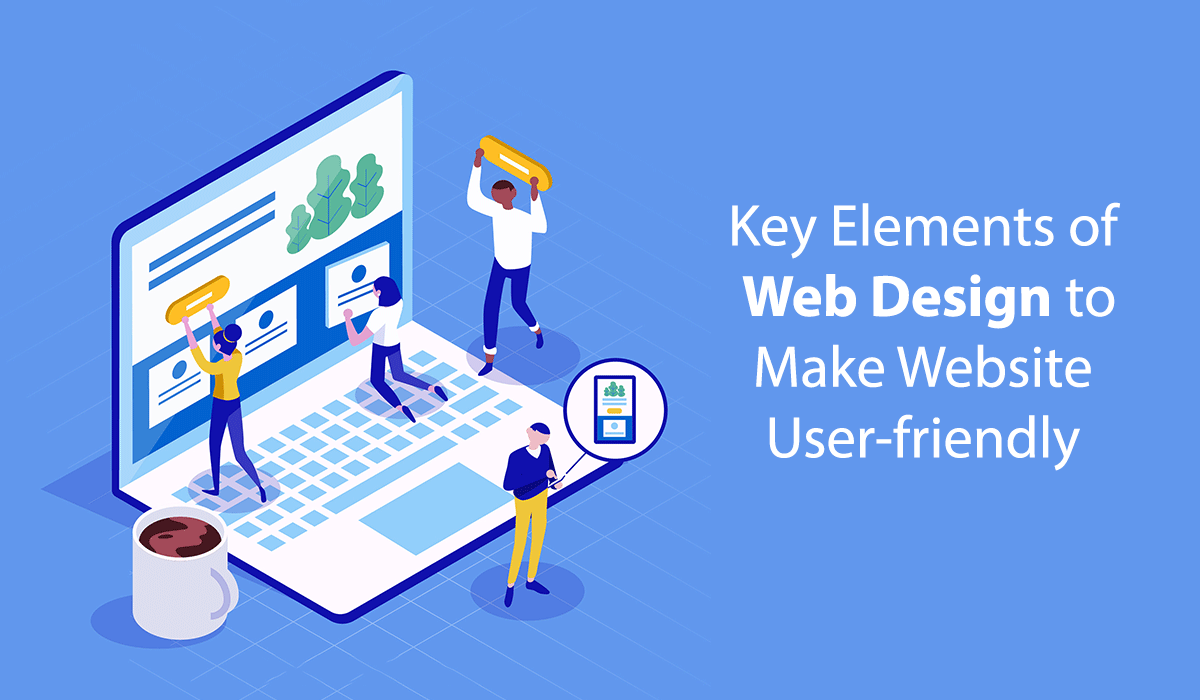
Creating a website is a complex task, and it can be even more daunting if you’re not familiar with the web design process. If you want your website to be easy to use for your visitors, you need to be aware of various key design elements that improve the usability of your website. Even if you don’t know, you are in the right place to gather the relevant details. Take a look at various elements of web design that are crucial.
-
User Interface
Designing a user-friendly website is essential for attracting and retaining website visitors. Here are key elements to keep in mind when designing a website:
- Use visually appealing fonts and colors.
- Make sure all website content is easy to find and navigate.
- Use clear and concise text formatting.
- Keep the website layout simple and organized.
- Provide easy access to important site features and functionality.
-
Navigation
Some best website designers in Bangalore suggest that the Navigation of your website should be simple, organized, and easy to use. Users should be able to find the content they are looking for quickly and easily. The following key web design components should be included in your website’s navigation:
- Header: Your website header should include your name, website address, and a few keywords that will help users orient themselves on the site.
- Menu Bar: The menu bar should include links to all of the blog’s main sections, such as Articles, Photos, Videos, and Contact Info. It is also a good idea to include a “Home” link at the top of the menu bar that takes users back to your homepage.
- Posts: Posts are a great way to highlight your latest blog posts and keep your readers informed about what you have been up to. They can also be used as a way to introduce new content or interact with your readers. To make sure that all of your posts are accessible from the main navigation, make sure that each post has a corresponding category tag.
- Pages: Pages are another great way to organize your content and make it more user-friendly. Each page can have its unique URL and title, making it easier for
-
Typography
If you want your website to be user-friendly, make sure the text is easy to read. Keep font sizes small and use readable fonts like Arial or Helvetica. Use a sans serif font for headings and other important text, and make sure all titles are spelled correctly. And never let text run off the edge of a page, or it will be difficult for users to find their way around.
-
Colors and Graphics
One of the most important aspects of web design is choosing colors and graphics that are easy on the eyes and look professional. When users visit your website, they should be able to see everything clearly and easily. Here are some key components of website layout to keep in mind when choosing colors:
- Keep your colors simple. Use a few shades of the same color, and avoid using too many different colors. This will make your website more visually appealing and easier for the eyes.
- Use light colors on the backgrounds and dark colors on the text. This will help users read your content more easily.
- Avoid using flashy or cartoonish graphics. These designs can be difficult for users to understand, and they may look out of place on a professional website. Stick to traditional designs that will look great on any computer screen.
-
Loading Time
Web users are impatient. According to a recent report, as much as 84% of all pageviews are generated in under three seconds. That means that websites that take longer than three seconds to load can lose customers in a hurry.
There are several things you can do to make your website load faster. First and foremost, make sure your website is using the latest web technologies. This means using HTML5 instead of older versions, using CSS3 for layout and animation, and employing JavaScript for user interface interactions.
Second, make sure your website is well organized. Large files should be broken down into smaller chunks and cached on the user’s computer. Also, include active images and videos only when they are required and use AJAX calls only when necessary. Finally, avoid making unnecessary requests to external web services. Doing so can slow down the entire website by loading unnecessary scripts and images from the server.
In short, keep these key elements in mind when designing a website: use the latest web technologies, break down large files into smaller chunks, cache content locally, avoid making unnecessary requests to external services, and prioritize visible content over hidden content.
-
Cross-Browser Compatibility
There are a few essential elements of web design that will ensure a website is cross-browser compatible. By following these design guidelines, your website will function in all popular browsers, regardless of their version or plug-in compatibility. First and foremost, make sure your website uses standard HTML and CSS formatting. This will make your site look consistent across browsers and help to minimize browser differences.
In addition, make sure all images are properly resized and compressed to reduce file size. And finally, avoid using excessive multimedia features, which can slow down page loading times and cause incompatibility issues. By adhering to these key principles, you’ll create a user-friendly web presence that will be appreciated by all.
Final Words
You may be interested in: Software Compatibility Testing: How Can It Help Your Business

